Beyond these obvious hazards are two we’ve experienced in the past: Bill was accidentally vaccinated for blackleg and I was “poured on.”
The blackleg incident occurred a couple of years ago during a clumsy hand-off of the hypodermic syringe filled with vaccine.
Blackleg 101 – Known as a clostridial disease, i.e., caused by anaerobic spores that allow bacteria to live in soil for long periods. Once spores are ingested by a cow or calf the disease hits hard and fast, and can be fatal in as little as 48 hours. Symptoms are lameness, depression, loss of appetite and hot painful swelling of a leg. The best prevention is to vaccinate both cows and calves.
When we’re working cattle, one of my jobs is to hand syringes to Bill and grab the ones he hands back to me. He uses multi-dose stainless steel and glass syringes and at least three are required per cow, sometimes four depending on the season. This was a chilly, blustery day and I was wearing light-weight cotton gloves. I handed a syringe to Bill at the same time he handed the one containing blackleg vaccine back to me. The syringe slipped through my grip-less glove and I watched in horror as it plummeted to the ground, expecting the glass barrel to shatter, spilling the vaccine. Luckily, the (expensive!) syringe survived the fall intact. Unluckily, Bill’s leg broke its fall as the needle plunged through his jeans into his calf muscle. Ouch! The pain lasted for several days. This is one of many reasons farm people should keep their tetanus shots current!
I was subsequently demoted from Vet Assistant II to I.
The Pour-On incident happened last year. Pour-On is a de-worming and de-licing solution poured or sprayed on the animal. The solution comes in a gallon plastic jug. The original cap is removed and a lid with a hose and pistol-grip nozzle is screwed on. My job is to hold the jug upside down and hand the nozzle to Bill. To insure a steady stream, I have to hold the jug high at arm’s length. On this occasion, the screw lid had worked loose so that when Bill “poured” the cow, I also got poured!
No demotion occurred this time. Plus, Bill hasn’t developed blackleg and I haven’t suffered an infestation of lice or worms!
I’m happy to report we worked this year’s cows and calves without Bill being vaccinated or me getting “poured on.”
Due to the increased numbers of cows and calves to be worked plus the fact that the cattleman and his highly efficient assistant (except for the dropped syringe incident!) aren’t getting any younger, Bill changed the working schedule this year. In past years, we worked the pairs to be wintered at the ranch during one very intense week in early November, two trailer-loads (7 pairs/load) each day. Bill didn’t return from the second trip until nearly dark or later and still had to hose out the trailer so it was ready to go the next day.
This year, we started the process in October with the cows that calved earliest. We worked one load per day, one or two days each week. A much more relaxed and aging cattleman and assistant-friendly schedule! We also benefited by being able to select our working days according to the weather; no more cold, blustery conditions.
In addition to the usual steps in the working process—trimming long tail hair on cows, replacing lost ear tags, vaccinating, spraying with Pour-On and castrating bull calves by banding their testicles—a new step was added this year: changing the needles on the syringes between cows. This new step was the result of losing a few cows to anaplasmosis the last two years. Anaplasmosis is an infectious blood disease caused by a parasite. It affects the red blood cells and causes severe anemia. If not caught early, it’s usually fatal. Older cows are particularly susceptible. Reusing needles runs the risk of spreading the disease in a herd.
Bill decided the best method for the needle change-out was to do it after he injected the cow and handed the syringe back to me. We used three multi-dose syringes containing three different vaccines, so each cow received three injections. Here’s our vaccination workflow:
- I hand Bill the first syringe, he injects the cow and passes it back to me;
- I take the first syringe from him and hand him the second one;
- While he injects, I twist off the old needle from the first syringe, twist on a new one and return the syringe to its assigned hole in the caddy;
- I pull the third syringe out of the caddy, hand it to Bill and take the second one back;
- Twist off old needle, twist on new one and return syringe to caddy.
- Bill hands me third syringe and I replace needle.
- Repeat steps 1 through 6 with the next cow and the next and the next, etc.
Except it didn’t really work that way and certainly not that smoothly.
To give you a visual, I’ve included pictures of a stainless steel and glass syringe, and our homemade syringe caddy. The first pic of the caddy shows the syringes in their assigned holes. The difference this year is that all our syringes are the stainless steel and glass type, like the first one. Also in this pic you can see part of the jug of Pour-On, on the left, and the trigger sprayer. The third pic shows the interior of the caddy.
I’m happy to report that as a result of the added responsibility of the needle exchange procedure, I’ve been promoted to Vet Assistant III. The bad news is there was no pay increase!

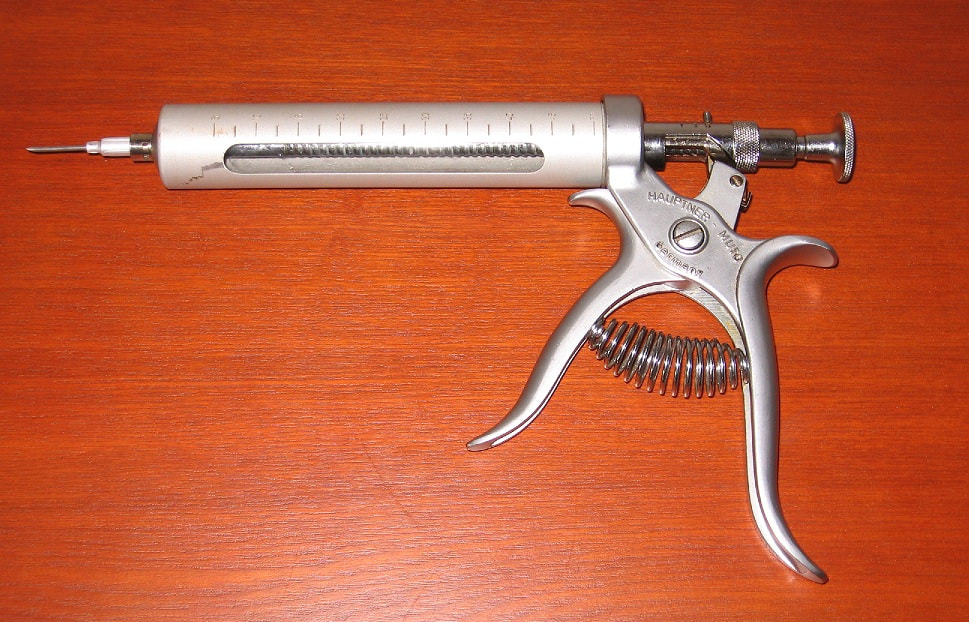
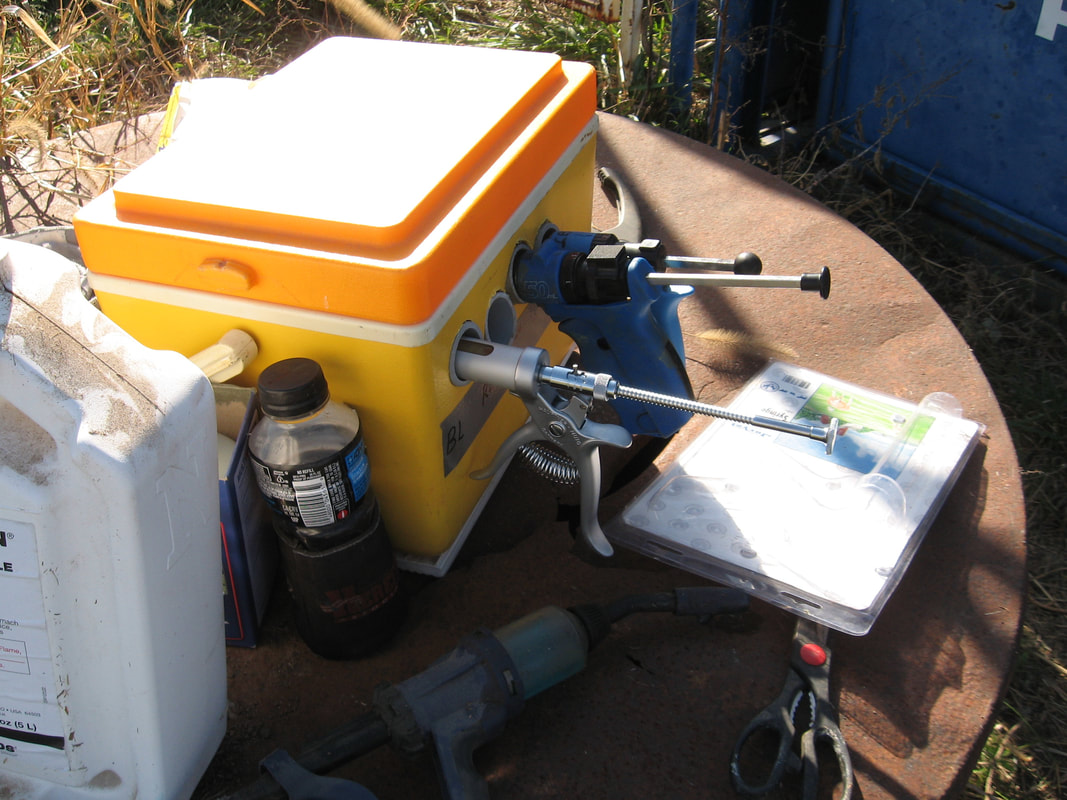
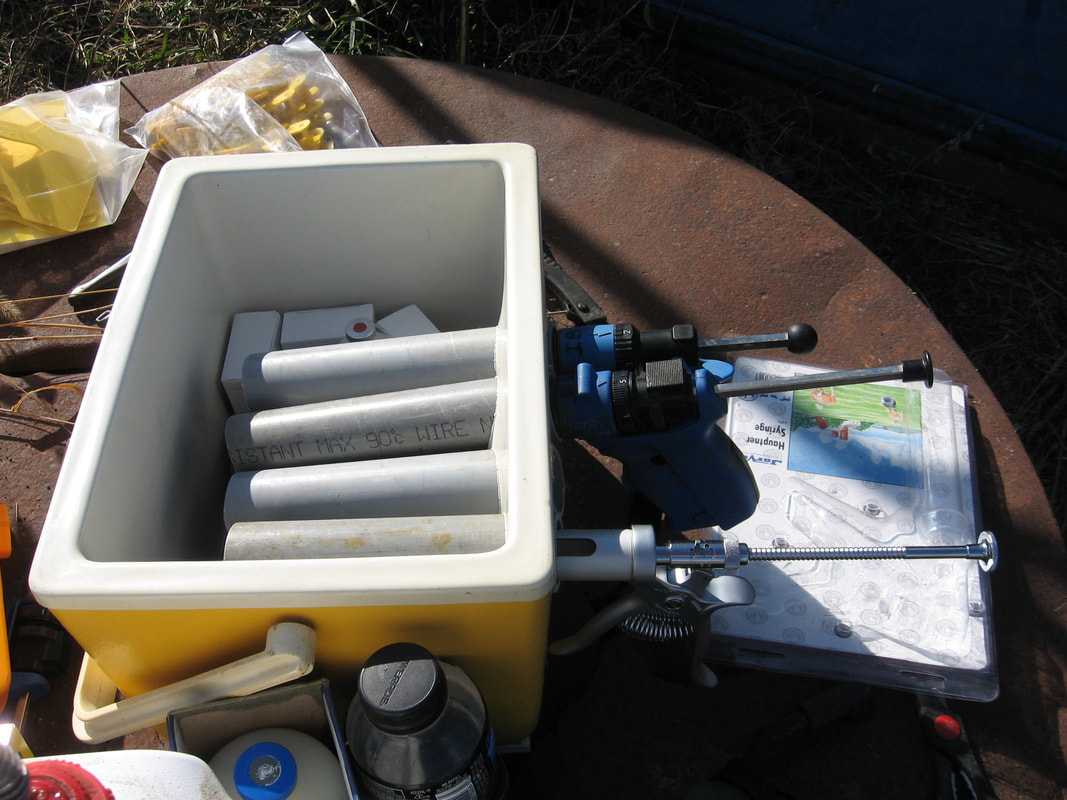

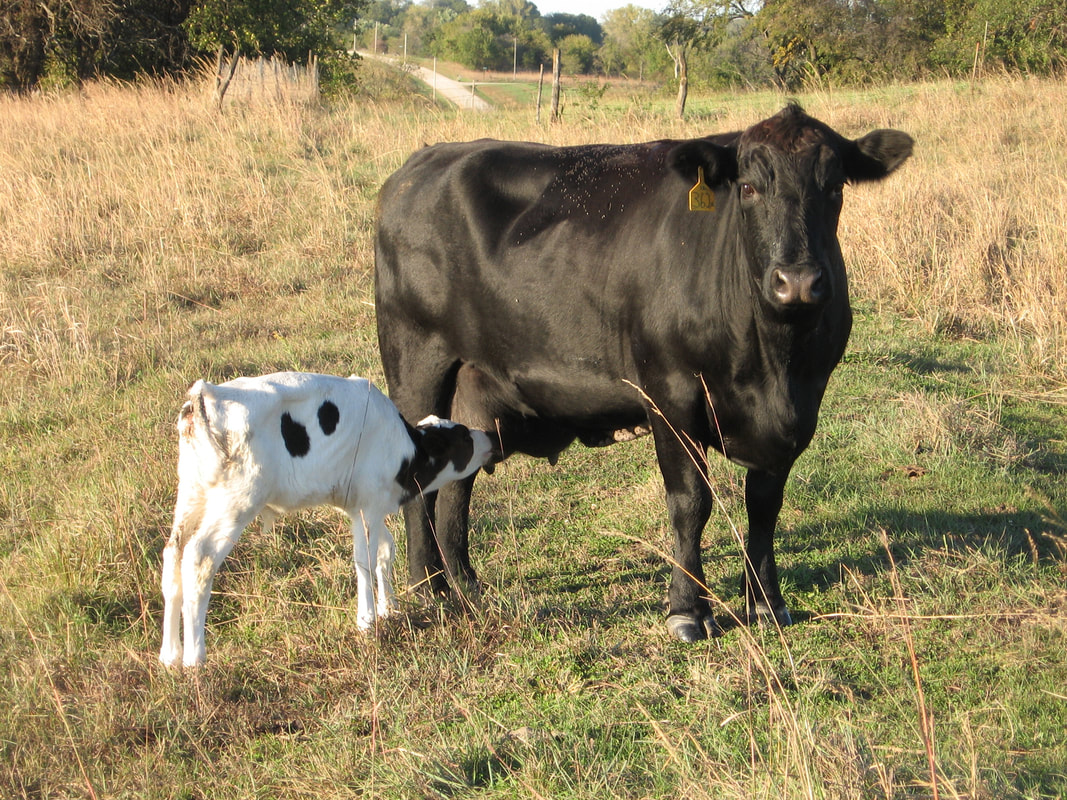
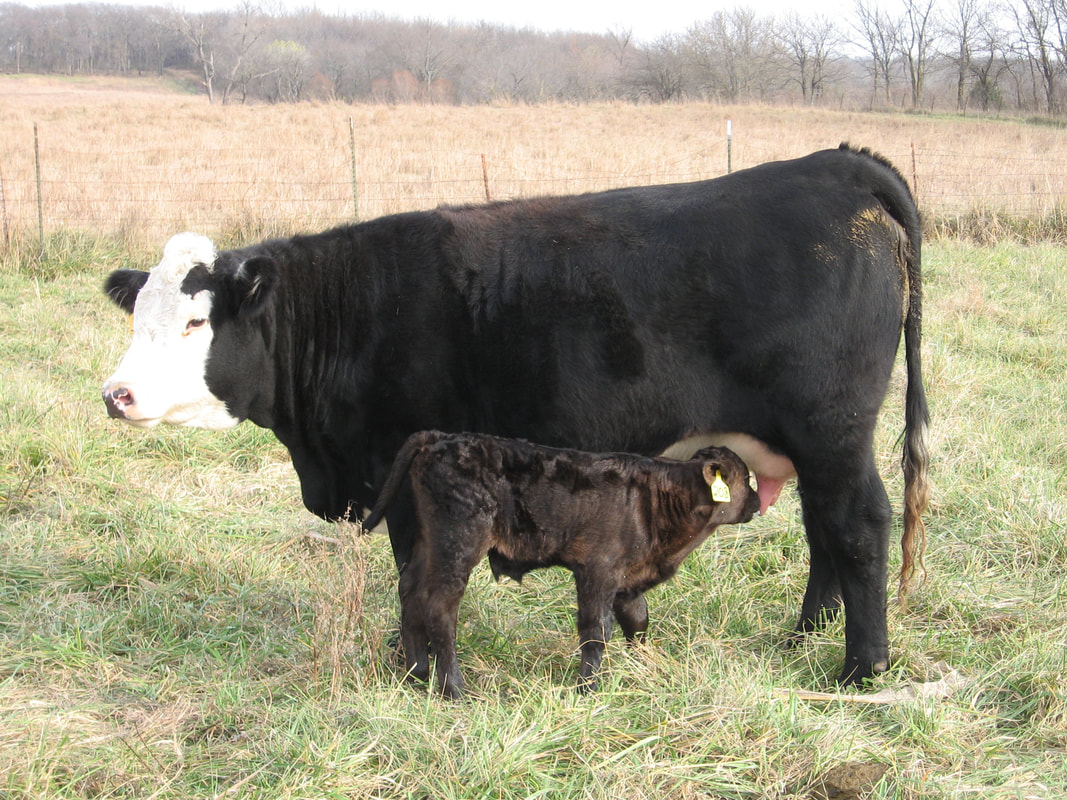
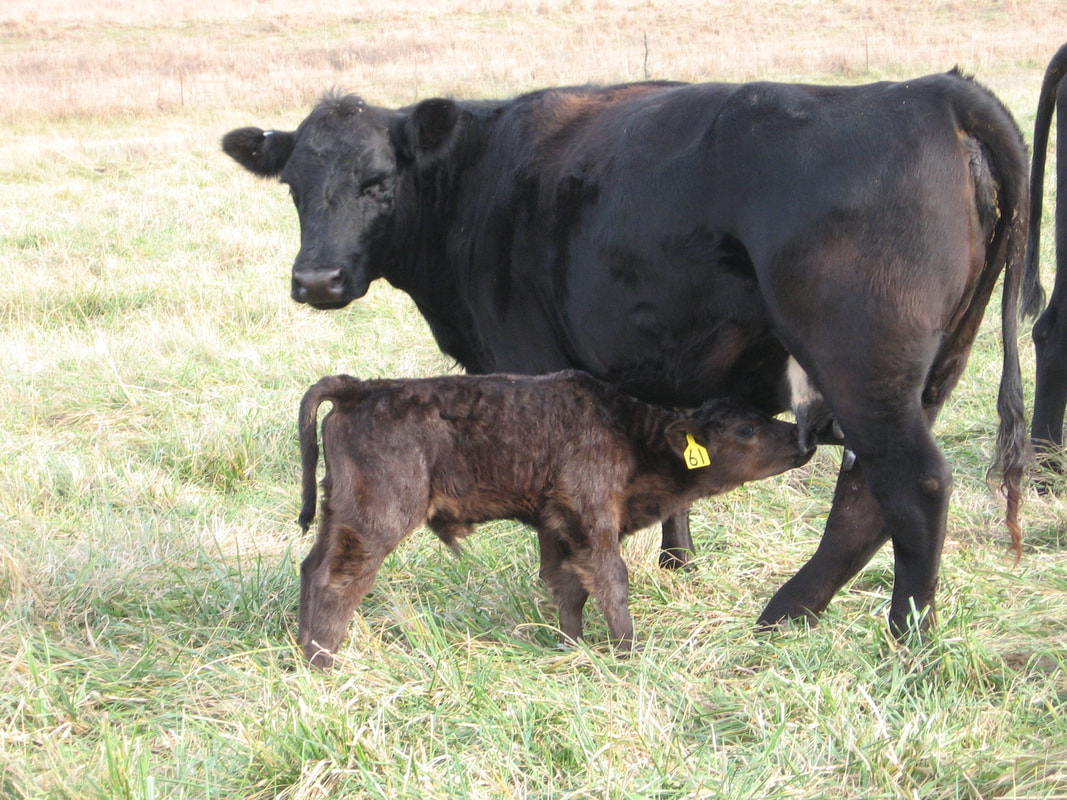
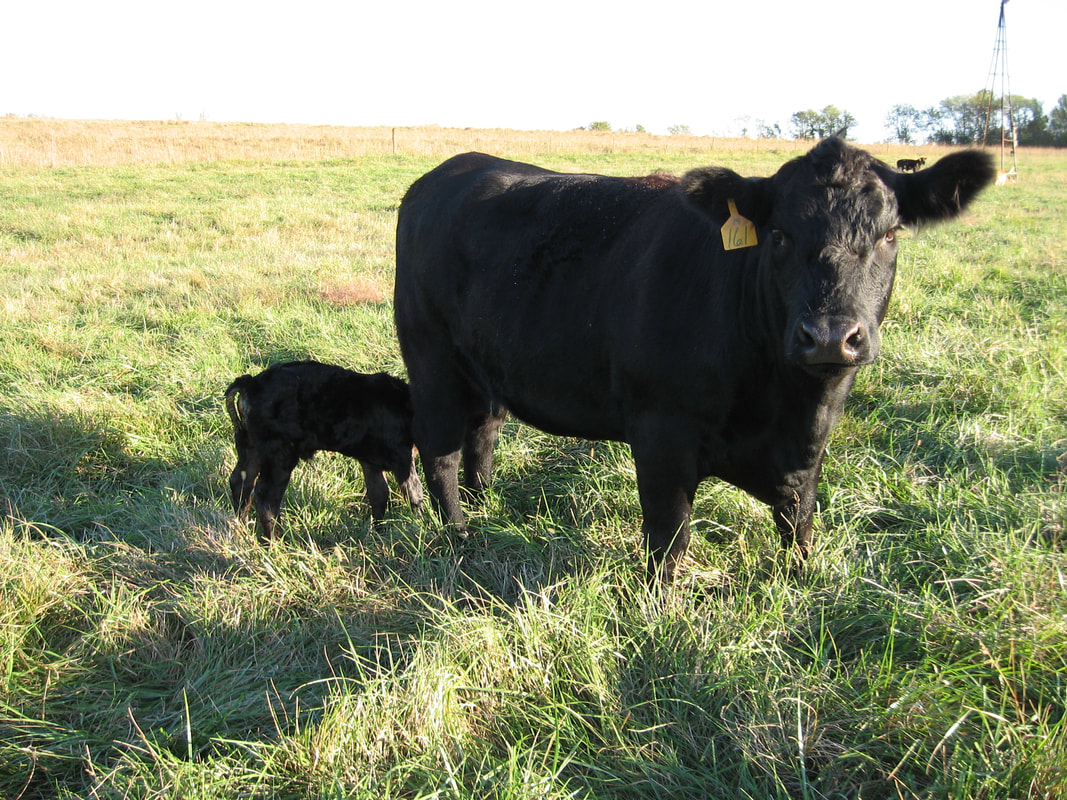
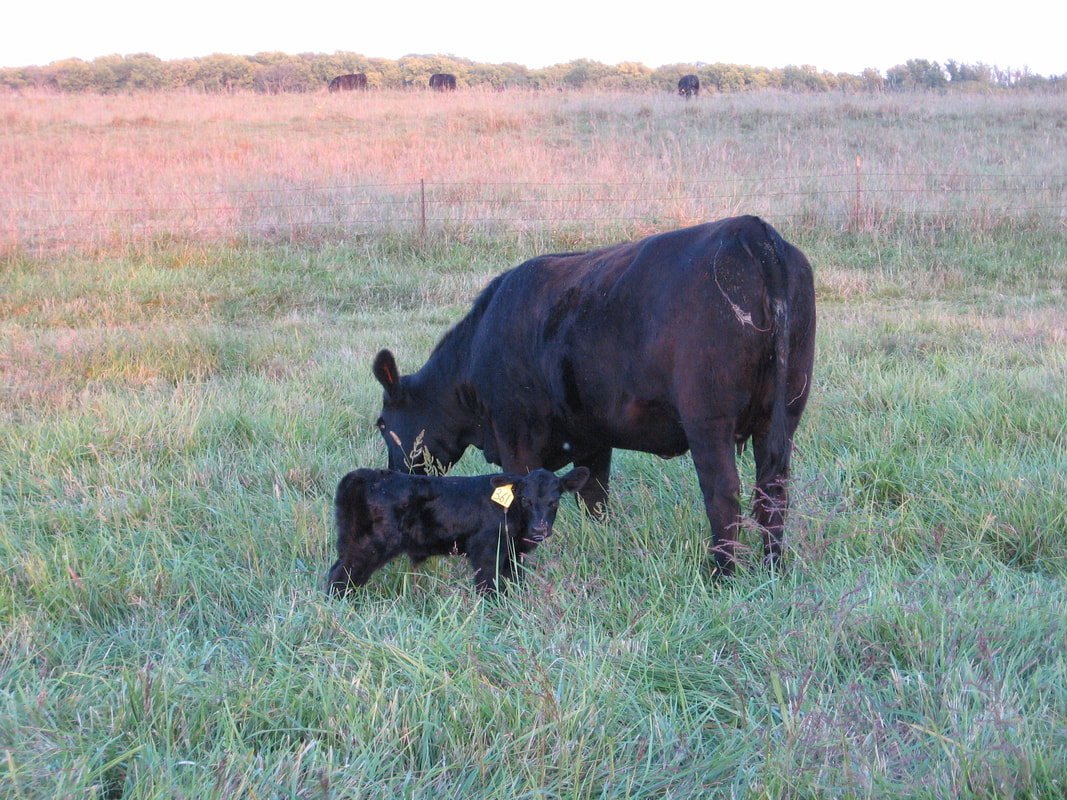

 RSS Feed
RSS Feed